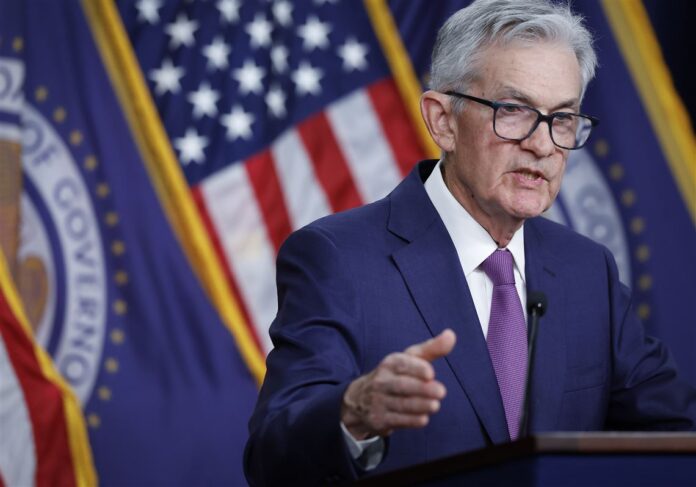In a keenly awaited announcement, the Federal Reserve announced on Wednesday that it is keeping interest rates unchanged at their current levels in the light of improving consumer confidence and declining inflationary levels.
The Importance of The Federal Reserve’s Dual Mandate
The Federal Reserve’s interest rate decision is a critical factor influencing the economy and financial markets. It has far-reaching consequences for businesses, investors, and consumers alike.
The Federal Reserve, often referred to simply as the Fed, operates under a dual mandate. Its primary objectives are to maintain price stability and promote maximum employment. The Fed’s interest rate decisions play a crucial role in achieving these goals. By adjusting interest rates, the central bank aims to control inflation and stimulate or restrain economic growth.
The Recent Interest Rate Decision
In recent discussions, the Federal Reserve decided to keep interest rates unchanged for the fourth consecutive meeting. This decision was widely expected, given the current economic conditions and inflationary pressures. The Federal Open Market Committee (FOMC), comprising 19 members, unanimously voted to maintain the policy rate within the range of 5.25% – 5.50%, which represents a 23-year high.
The Outlook for Rate Cuts
While the Fed kept rates steady, there has been speculation about the possibility of rate cuts in the near future. During the meeting, Fed Chair Jerome Powell acknowledged that many FOMC members were in favour of a rate cut in 2024. However, he indicated that a rate cut in March was unlikely. Powell emphasised that the decision to cut rates would depend on gaining greater confidence in sustainable inflation levels.
Factors Influencing the Fed’s Decision
The Fed considers various factors when making interest rate decisions. Two primary indicators are inflation and employment. The central bank aims to achieve stable inflation at a target rate of 2% while promoting maximum employment. In recent months, inflation has eased from its peak, but the path forward remains uncertain. The Fed is committed to monitoring inflation closely and ensuring it returns to the desired target.
The Balance of Risks
In its statements, the Federal Reserve emphasised the importance of achieving a balance between its goals of stable inflation and full employment. The central bank acknowledged that risks to these objectives were moving into better balance. The Fed will continue to assess incoming data, the evolving economic outlook, and the balance of risks when considering any adjustments to interest rates.
Economic Projections and Outlook
During the meeting, the Federal Reserve did not issue new economic projections. However, policymakers previously envisioned cutting the policy rate by 75 basis points throughout the year. The Fed noted that economic activity has been expanding at a solid pace, with job gains remaining strong. The central bank believes that the economy is broadly normalising, and the labour market is following suit.
The Peak of the Lending Rate
Fed Chair Jerome Powell suggested that the benchmark lending rate has likely reached its peak for this tightening cycle. Powell stated that if the economy evolves as expected, it will likely be appropriate to begin dialling back policy restraint at some point in the year. This indicates a potential shift in the central bank’s approach to monetary policy.
Quantitative Tightening and Balance Sheet Reduction
The Fed also addressed its balance sheet reduction program, known as quantitative tightening. The central bank currently allows a maximum of $60 billion of Treasuries and $35 billion of mortgage-backed securities to roll off its balance sheet each month. While the statement did not hint at any changes to the program, Powell indicated that an in-depth discussion would be held in March regarding the framework for winding down balance sheet reduction.
Market Reactions
Market participants closely monitor the Federal Reserve’s interest rate decisions and statements for potential market implications. While the decision to keep rates unchanged was widely expected, investors pay attention to the central bank’s forward guidance. Any indications of future rate cuts or a shift in policy stance can have a significant impact on financial markets, including stocks, bonds, and currencies.
In Conclusion
The Federal Reserve’s interest rate decisions have significant implications for the economy, businesses, and consumers. While the recent decision to keep rates unchanged was anticipated, the central bank remains vigilant in monitoring inflation and employment trends. The possibility of future rate cuts and the winding down of balance sheet reduction programs will continue to shape market expectations. As the economy evolves, it is essential to closely follow the Federal Reserve’s decisions and statements to stay informed about the trajectory of interest rates and their impact on various sectors.


